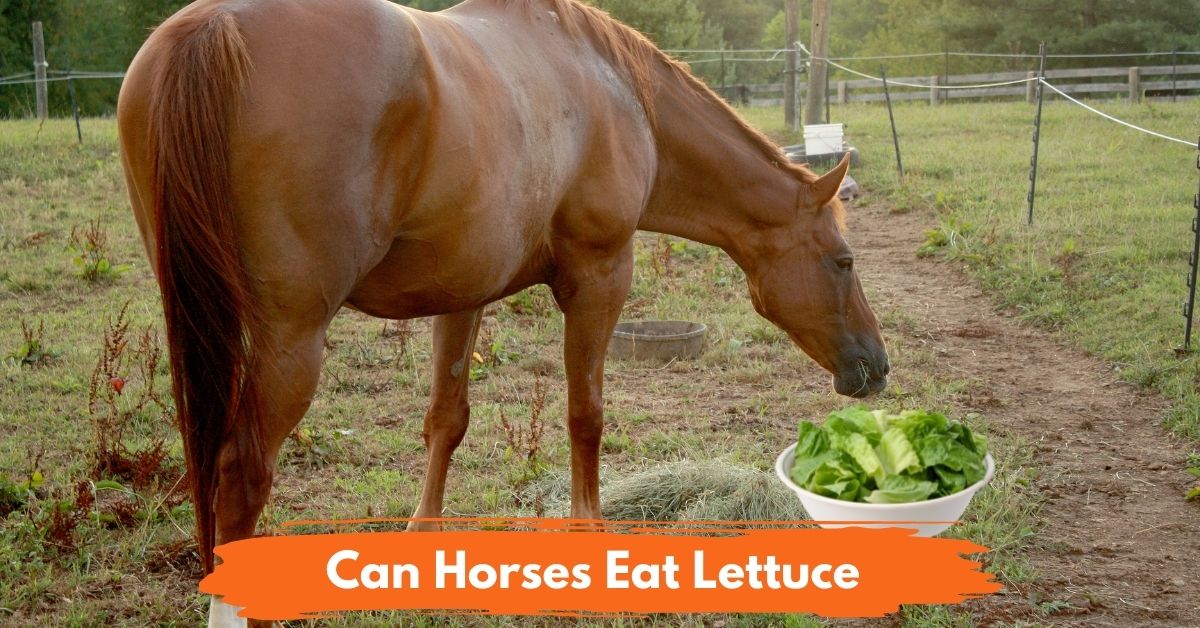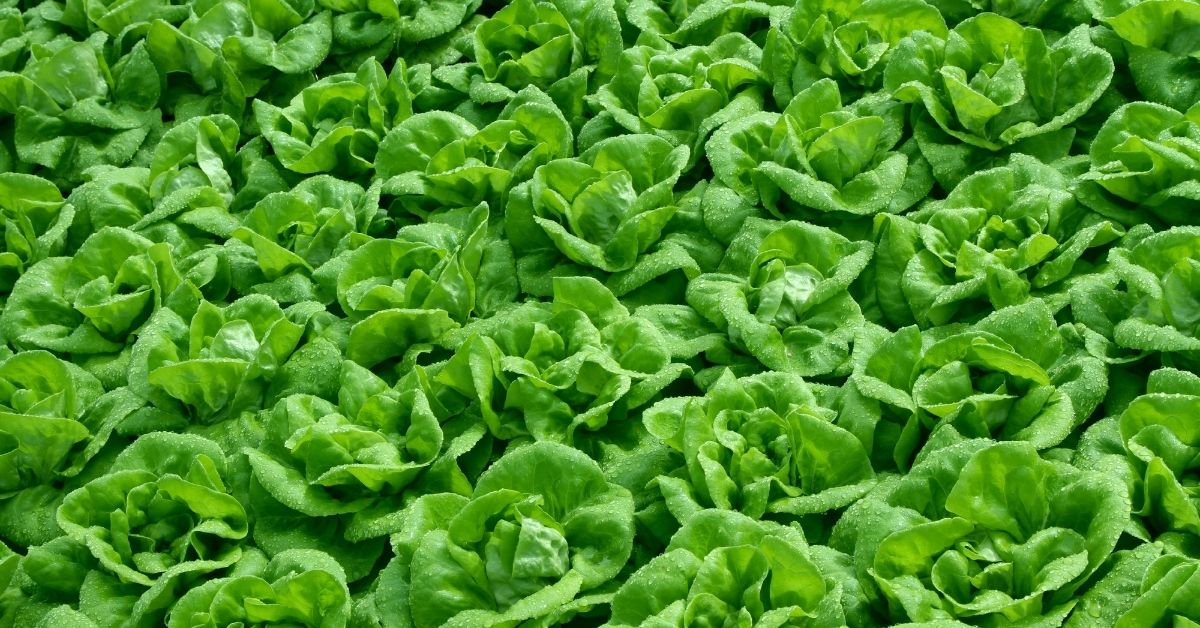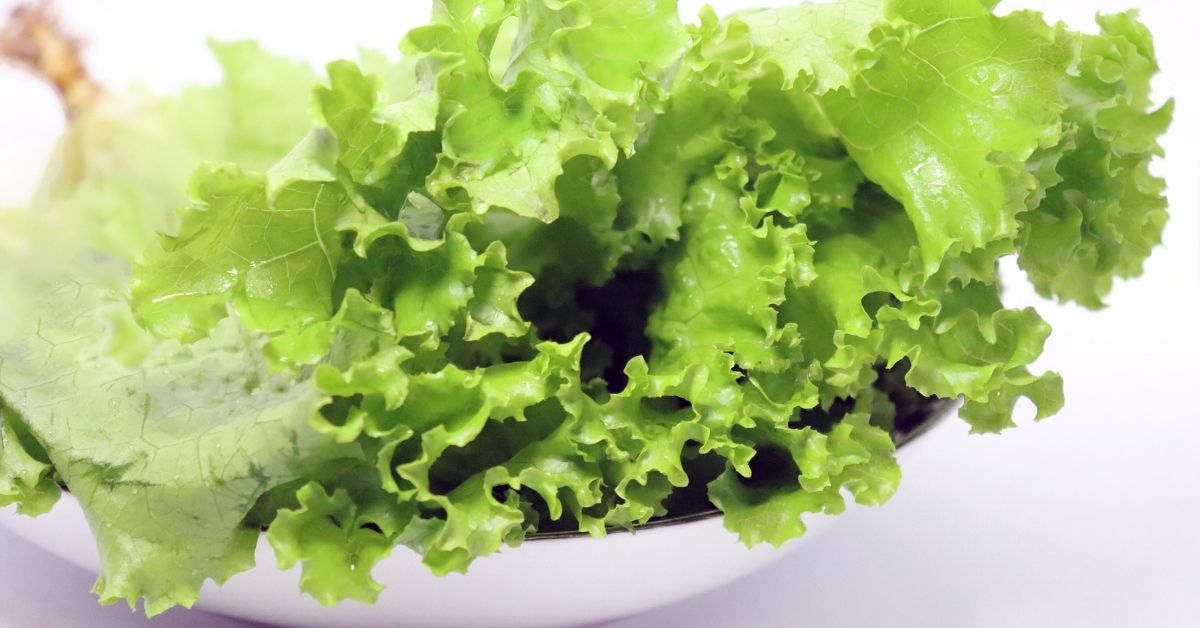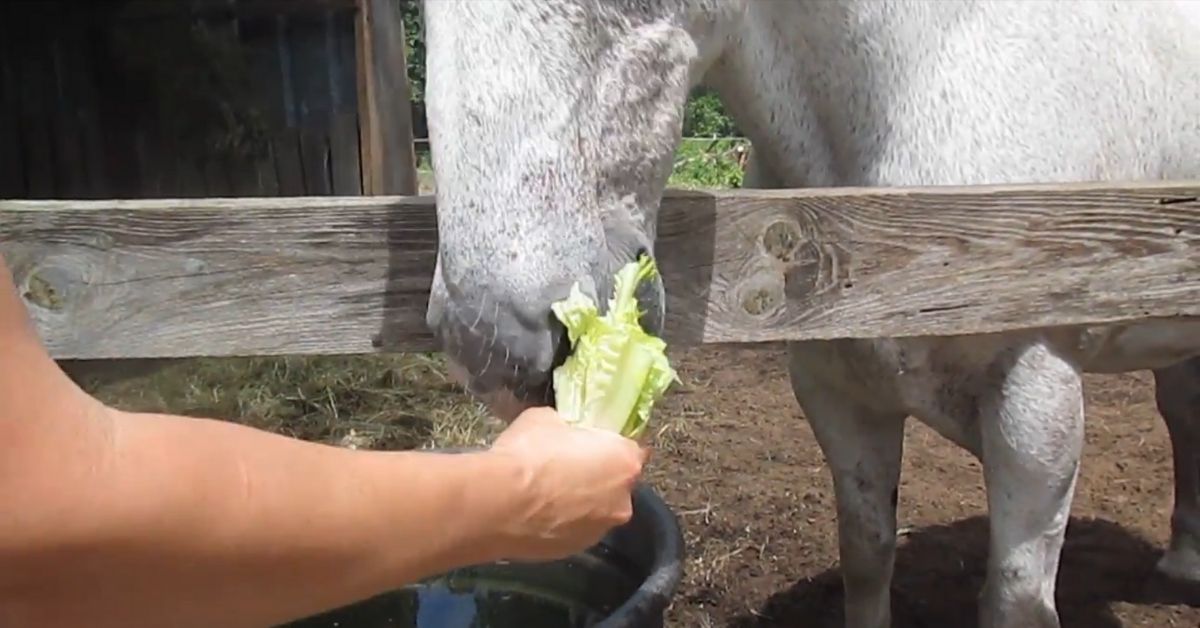
Horses can eat lettuce as it’s one of the vegetables that benefit them. It’s a great source of hydration, so it can ward off the heat during summer! This vegetable is also low in calories.
I started feeding my horses lettuce after I bought a lot in a farmer’s market. Aside from healthy living, I enjoy eating salad the most in summer. So, I thought my horses would like it too. I wasn’t wrong as they enjoy it as much as I do.
You may witness the same thing with your horses. But I want to remind you that lettuce is not a staple for horses. Consider it as a treat that is an occasional part of the meal.
Apart from this, learn more about lettuce and what it can do for horses. As you know, there are various species of lettuce, and they have different contents.
Do Horses Like Lettuce?
Horses like lettuce because of the crunch and refreshing, watery nature. It’s a juicy leafy vegetable that doesn’t pose any danger when consumed by animals like horses. If you think of it, lettuce is juicier than the grass and shrubs that they consume outdoors.
With the 95% of water content in lettuce, there’s no doubt that it can cool them down under the summer heat. A cup of lettuce can provide a quarter cup of water to a horse. It comes with fiber that is good for the animal’s body.
Many think about the low nutrient content of lettuce. The 95% water in lettuce dilutes most of the nutrients. Thus, a person should eat at least 2.5 cups of lettuce daily to get enough nutrients. But it’s not the case with the horses, as they only need to snack on lettuce.

Can Horses Eat Lettuce Heart
The lettuce heart is the center part of the lettuce head. It’s been my favorite since I was a child because it’s sweeter and tastier. I sometimes dip it in salt and eat it as it is without any dressing. Hence, it’s ideal for making delicious Caesar salad.
The lettuce heart is yellow, unlike the green leaves on the exterior of a lettuce head. As mentioned, I discovered that my horses eat lettuce when I once had a vast supply. Knowing that lettuce heart tastes better than the leaves, I didn’t deprive my horses of having it. You may cut the heart or remove each leaf before serving.
It’s not only about more than enough supply for my salad, but I want them to have the best part of lettuce. The leaves and the heart of the lettuce have the same nutrients. You may think there’s a difference because of their colors.
The outer part of the leaves gets a dark green hue because of sunlight exposure. They can give way to chlorophyll production better than the heart. But the yellow or pale green color doesn’t mean fewer nutrients.
Can Horses Eat Lettuce Leaves
The content of leaves is the same as the heart. Thus, horses can eat lettuce leaves too. I must say that you don’t give any pieces of lettuce leaves. They should be free from discoloration, bad smell, and slimy texture.
These are the signs of decaying leaves that can cause gas and even colic. If you choose to feed your horse lettuce leaves, they have to be the fresh ones. The spoiled one can ferment in the stomach of your horse and cause issues.
Again, you can’t feed your horses with any lettuce leaves. Watch out for the thorny species as they can have substances bad for equine. That’s why I give my horses the familiar types of lettuce. Don’t let them forage wild lettuce, especially if you can’t identify the plant.
Also, bitter-tasting lettuce has harmful substances like lactucin and lactucarium. They can harm the digestive system and central nervous system of horses. The bitter lettuce can sedate your horses when they eat it in a large amount.
Regardless of species, the bitter taste forms based on growing conditions. I’ve learned that this plant is sensitive to temperature. Based on gardening tips, lettuce is grown in spring or late summer. Not only that the plant doesn’t grow well due to high temperature, but its leaves also become bitter.
About this concern, you better taste the leaves before giving them to your horses. After you pick the suitable lettuce leaves, wash them to prevent any issues. I also must warn you that water lettuce is not ideal for horses. It’s not only toxic to humans but animals like horses too.

Can Horses Eat Romaine Lettuce?
Horses can eat Romaine lettuce, and this is the first species I have introduced to my horses. Even captive Manatees, large marine animals, love to munch on it. You can’t blame this animal because this lettuce is tasty. For your information, it has more nutrients than iceberg lettuce.
A cup of shredded Romaine lettuce has plenty of Vitamin A, Beta carotene, and lutein. There’s a small amount of Vitamin K, Vitamin C, potassium, folate, calcium, and magnesium. The good news is it doesn’t contain cholesterol and fatty acids. Furthermore, it doesn’t have something that can alter the system of an equine.
Can Horses Eat Iceberg Lettuce?
Horses can eat iceberg lettuce. Let it cool in the fridge for the crunchiness your horses will enjoy! Its neutral taste makes it appealing to most horses. Like other lettuce, this is hydrating, so it’s a worthy snack despite its low amount of nutrients.
It’s only about low nutritional content. Horses can get Vitamin A, Beta carotene, lutein, and potassium from iceberg lettuce. They’re fainter than the content of Romaine lettuce. Additionally, it has a small amount of folate, Vitamin K, magnesium, and sodium.
Is Lettuce Good For Horses
Horses don’t only enjoy the crunch and juiciness of lettuce during summertime. They can get health benefits from this vegetable and they are as follows.
For Hydration
Lettuce is good for horses because of its watery content that aids hydration. The diet of equines is plant-based, and they find lettuce delightful. You can feed it to your horses to help them cool down in summer.
Roughage Substitute
Most horse owners see to it that some roughage is in the meals of their horses. They can have lettuce for roughage and mix it with hay and grain. You can do it, too, if your horses can’t graze.
Nutrition Facts
As mentioned, the watery characteristic of lettuce dilutes the nutrients that it carries. While a horse enjoys the taste and texture of this vegetable, it can gain nutrients. For example, the fiber from lettuce is excellent for digestion. It can ensure regular operation on a horse’s stomach and intestine.
Even if there’s a small amount of folate, it can still promote the production of white blood cells in an equine body. The amount of potassium in lettuce may not support the energy they need. At least, it adds up to the supply. This vegetable has Vitamin A, which is helpful for the hoof tissue maintenance of horses.
Lettuce doesn’t have cholesterol and fatty acids. Thus, it won’t result in overweight horses. It also means that it’s not a threat to insulin-resistant horses. Instead of sugary treats that can ruin your horse’s teeth, you can opt for lettuce.

Is Lettuce Bad For Horses?
There are pros and cons to everything in this world. Lettuce can be bad for horses in some instances listed below.
The Issue With the Amount of Lettuce
You may think that the amount and frequency of feeding lettuce to your horses don’t matter as it has a lot of water. But it should only be 10% of the horse’s diet. Exceeding the recommended amount can lead to digestive issues.
More intake of lettuce means more fiber which is hard for a horse to digest. You may make this vegetable a roughage but in the right amount.
Again, you may not care about the frequency of feeding lettuce to your horses. You may only consider its water content. I must say that nothing can replace the water in your horses’ needs. You’re doing it wrong when you give your horse lettuce every day.
Lettuce doesn’t contain the minerals and nutrition that a horse needs. Yes, it helps with hydration, but can’t provide all the nutrients a horse requires.
Quality of Lettuce
You don’t want to eat wilted cabbage, and your horses have the same feeling. I give lettuce to my horses not because the vegetable has gone wrong. So, I buy fresh lettuce allotted for their treat. Considering their sensitive stomach, horses can have digestive issues with spoiled lettuce.
Type of Lettuce
There are several types of lettuce, and some of them are not good for horses. Water lettuce and thorny species are harmful to them. Be careful when letting them graze, especially near a pond, lake, or river. They might come across water lettuce and munch it.
The high chance that horses find an undesirable type of lettuce is when they’re outdoors. Be responsible enough to give your horse harmless lettuce. Bitter lettuce is not good for the stomach. So, you may sample it before serving.
How to Feed Your Horse Lettuce
It’s easy to feed your horse lettuce. I wash it and then remove the wilted parts. Next, I separate the good leaves and rewash them.
I wash them twice to ensure that no chemicals stick to the leaves. Let the leaves dry before feeding your horse. It’s time to bond with my horse as I put the leaves flat on my palm, and it picks them up with its mouth.
Aside from direct feeding, you can cut the leaves and mix them with the regular meal. Never feed your horse a whole head of lettuce. It’s best to separate the leaves to ensure they’re free of chemicals or bugs. You should know that horses can’t take a big bite, so they’re prone to choking.
Conclusion
Lettuce is one of the vegetables that you can incorporate into your horse’s diet. Hydration is the primary benefit that it offers. Even in small amounts, horses can get Vitamin K, Vitamin A, folate, and potassium.
This leafy vegetable won’t lead to overweight equine. It can’t cause a sugar rush and dental issues. Moreover, it’s safe for horses that are insulin resistant. But you must limit the serving to 10% of a horse’s diet.
